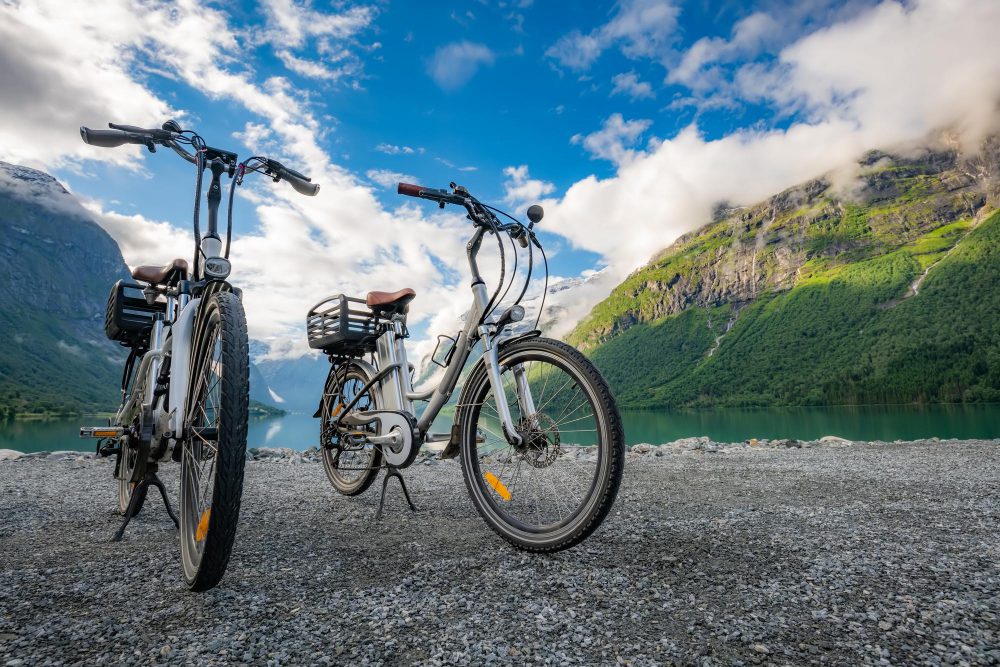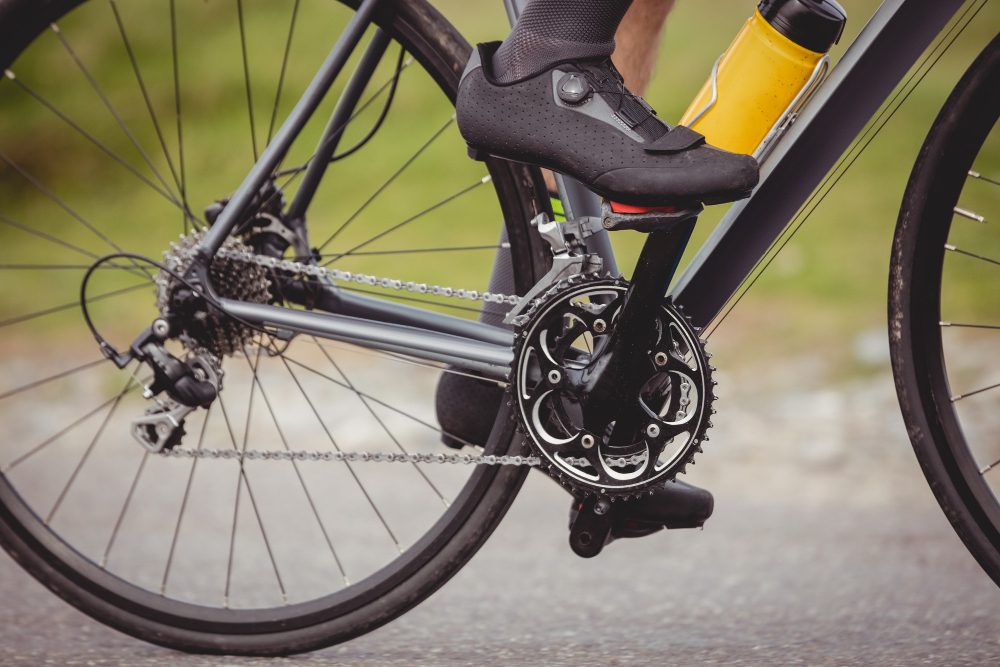What is the difference between a road bike and a touring bike?
When it comes to choosing a bicycle for your cycling adventures, two popular options are road bikes and touring bikes. While both may look similar at first glance, they are designed with different purposes in mind. Understanding the differences between these two types of bikes can help you make an informed decision based on your specific needs and preferences.
Design and Riding Style
A road bike, as the name suggests, is primarily designed for speed and efficiency on paved roads. It features a lightweight frame, narrow tires, dropped handlebars, and a more aggressive riding position. Road bikes are optimized for racing, group rides, and long-distance cycling at a higher pace.
Touring bikes, on the other hand, are built for comfort and versatility over long distances. They typically have a more relaxed geometry, wider tires for stability, and a more upright riding position. Touring bikes are designed to carry heavy loads, making them ideal for long-distance travel, commuting, and adventurous touring.
Frame and Components
In terms of frame construction, road bikes often use lightweight materials like carbon fiber or aluminum to reduce weight and increase speed. They have a stiffer frame for efficient power transfer while pedaling. Touring bikes, on the other hand, prioritize durability and strength. They usually have steel frames that provide a smoother ride and can withstand the rigors of carrying heavy loads.
When it comes to components, road bikes tend to have a greater focus on speed, with features such as aerodynamic wheels, narrow gearing ratios, and lightweight drivetrains. Touring bikes prioritize reliability and comfort, often equipped with wider gear ranges, stronger wheelsets, and additional mounts for racks and panniers.
Use and Terrain
Road bikes are best suited for smooth, well-paved roads and are commonly used for racing, fitness cycling, and group rides. Their narrow tires and lightweight design make them less suitable for rough or unpaved surfaces. On the other hand, touring bikes are built to handle a variety of terrains, including gravel roads and even off-road trails. They are designed for long-distance travel, carrying loads, and exploring diverse landscapes.
It doesn’t matter which bike you choose; what matters is enjoying the ride and finding the one that suits your needs and preferences the best.
Summary
In summary, road bikes and touring bikes have distinct differences in terms of design, riding style, frame construction, components, and suitable use. Road bikes prioritize speed, efficiency, and racing performance on paved roads, while touring bikes focus on comfort, durability, and carrying capacity for long-distance travel. By understanding these differences, you can select the right type of bike that will enhance your cycling experience and meet your specific requirements.
What is the difference between a touring bike and a mountain bike?
1. Introduction
In the world of bicycles, there are various types designed to suit different terrains and purposes. Two popular options are touring bikes and mountain bikes. While they may share some similarities, there are distinct differences that set them apart.
2. Touring Bikes
Touring bikes are specifically built for long-distance travel on paved roads and often used for bike touring or commuting. They have a sturdy frame, relaxed geometry, and are designed for comfort and stability over extended periods of riding.
3. Mountain Bikes
Mountain bikes, on the other hand, are designed for off-road trails and rough terrains. They have a durable frame, suspension forks, wider tires with aggressive tread patterns, and multiple gear options to tackle steep inclines and technical descents.
4. Frame Geometry
A noticeable difference between touring bikes and mountain bikes lies in their frame geometry. Touring bikes typically have a longer wheelbase and a more relaxed head tube angle, providing stability and comfort for long rides. Mountain bikes have a shorter wheelbase and a steeper head tube angle, allowing for more agile handling on uneven surfaces.
5. Tires
Tire selection is another key distinction between the two. Touring bikes come with slick or lightly-treaded tires suitable for pavement, offering low rolling resistance and increased efficiency. Mountain bikes, on the other hand, feature wide and knobby tires designed to provide traction on off-road trails, sacrificing speed for grip.
6. Gearing
Touring bikes usually have a wider range of gears to accommodate varied terrain and long distances. They often have triple chainrings in the front and a wide cassette in the rear, offering a broad spectrum of gear ratios for climbing and carrying heavy loads. Mountain bikes, on the other hand, prioritize lower gears to tackle steep climbs, with a focus on off-road performance rather than long-distance efficiency.
7. Suspension
While touring bikes typically have no suspension or minimal front suspension to absorb road vibrations, mountain bikes are equipped with suspension forks (and sometimes rear suspension) to handle rough terrain and provide a smoother ride.
8. Purpose
Ultimately, the primary difference between touring bikes and mountain bikes lies in their intended use. Touring bikes are designed for long-distance travel on paved roads, prioritizing comfort and efficiency. On the other hand, mountain bikes are built for off-road adventures, offering durability and performance over rough terrains.
9. Conclusion
Whether you are planning a cross-country tour or an adventurous trail ride, understanding the differences between a touring bike and a mountain bike is essential. Consider your riding preferences and terrain to choose the most suitable bicycle for your needs.
10. References:
- “Touring Bicycles”, Bicycle Touring Pro, https://bicycletouringpro.com/touring-bicycles/
- “Mountain Bikes”, REI Co-op, https://www.rei.com/learn/expert-advice/mountain-bike.html
“A touring bike is like a comfortable road vehicle for long-distance journeys, while a mountain bike is like an off-road SUV ready to conquer the trails.”
What is the difference between a touring bike and a cruiser?
A touring bike and a cruiser are two popular types of bicycles that cater to different riding needs and preferences. While both bikes offer their unique advantages, understanding their differences can help you choose the right one for your needs.
Touring Bike
A touring bike is specifically designed for long-distance rides and carrying heavy loads. It features a sturdy frame, wider tires, and multiple mounting points for racks and panniers. The geometry of a touring bike is optimized for comfort and stability, ensuring a smooth ride even on rough terrain. These bikes often come with a wide gear range to tackle various gradients encountered during touring.
Key features of a touring bike:
- Durable frame for carrying heavy loads
- Wider tires for better stability
- Mounting points for racks and panniers
- Comfortable geometry
- Wide gear range
Cruiser
A cruiser, on the other hand, is designed for casual and relaxed riding. These bikes typically have a low-slung frame, wide handlebars, and large, cushioned seats for maximum comfort. Cruisers prioritize style and leisurely rides over speed and efficiency. They are ideal for shorter trips and cruising around the city or beachfront.
Key features of a cruiser:
- Low-slung frame for easy mounting and dismounting
- Wide handlebars for an upright riding position
- Cushioned seats for enhanced comfort
- Stylish design
While touring bikes excel in long-distance rides and carrying heavy loads, cruisers are best suited for relaxed, casual rides around town.
Choosing the Right Bike for You
When deciding between a touring bike and a cruiser, consider your riding goals and preferences. If you plan on embarking on long journeys or need a bike for commuting with extra cargo capacity, a touring bike is the way to go. On the other hand, if you prioritize comfort, style, and leisurely rides, a cruiser will be more suitable.
Ultimately, both bikes offer unique riding experiences and cater to different needs. Assessing your requirements and understanding the key differences will help you make an informed decision.



